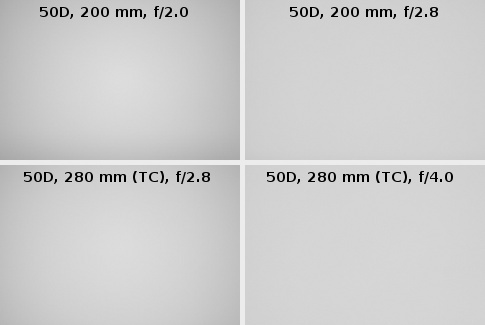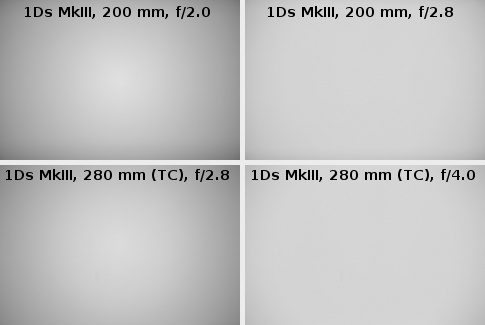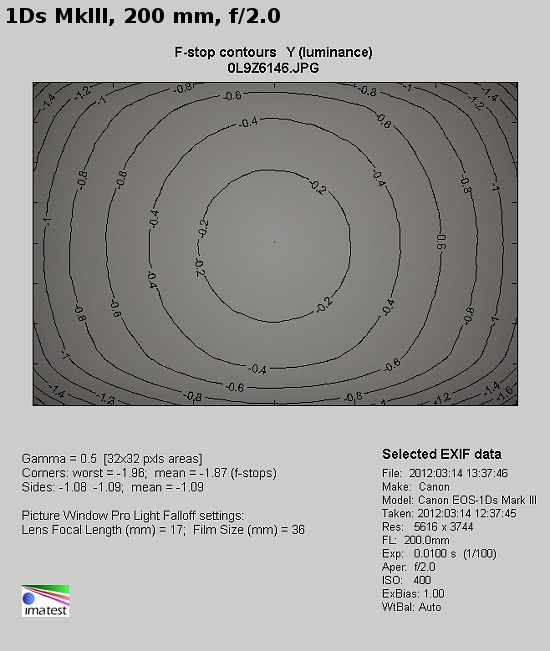Canon EF 200 mm f/2.0L IS USM
8. Vignetting

At the maximum relative aperture the vignetting of the lens is noticeable but it can hardy be called bothersome. The value, measured by us, amounted to 23% (-0.74 EV). On stopping down the aperture to f/2.8 that problem was eliminated completely – the vignetting was reduced to a negligible value of 5% (-0.14 EV).
Please Support UsIf you enjoy our reviews and articles, and you want us to continue our work please, support our website by donating through PayPal. The funds are going to be used for paying our editorial team, renting servers, and equipping our testing studio; only that way we will be able to continue providing you interesting content for free. |
- - - - - - - - - - - - - - - - - - - - - - - - - - - - - - - - - - - - - - - - - - - - - - - -
Similar results you get after attaching the converter. At the maximum relative aperture the brightness loss in the frame corners gets to 17% (-0.53 EV) and it becomes imperceptible by f/4.0 reaching just 3% (-0.08 EV).
On full frame the vignetting is of course bigger but you can call it bothersome only at the maximum relative aperture, where it increase to 48% (-1.87 EV). This aberration becomes moderate by f/2.8 where it amounts to 20% (-0.66 EV). From f/4.0 the problem disappears completely, being there just 4% (-0.10 EV), nothing more than a symbolic value.

After using the teleconverter the vignetting slightly decreases; however, at the maximum relative aperture, it would be difficult not to notice it as it gets to the value of 38% (-1.38 EV). It becomes slight by f/4.0 where it reaches 13% (-0.41 EV) and it disappears completely by f/5.6, where it is just 3% (-0.08 EV).
It’s worth noticing here that the results of the Canon 2/200 are a bit worse than those of the Nikkor AF-S 200 mm f/2G ED VRII, which, on full frame, had the vignetting amounting to 32%.
 |






